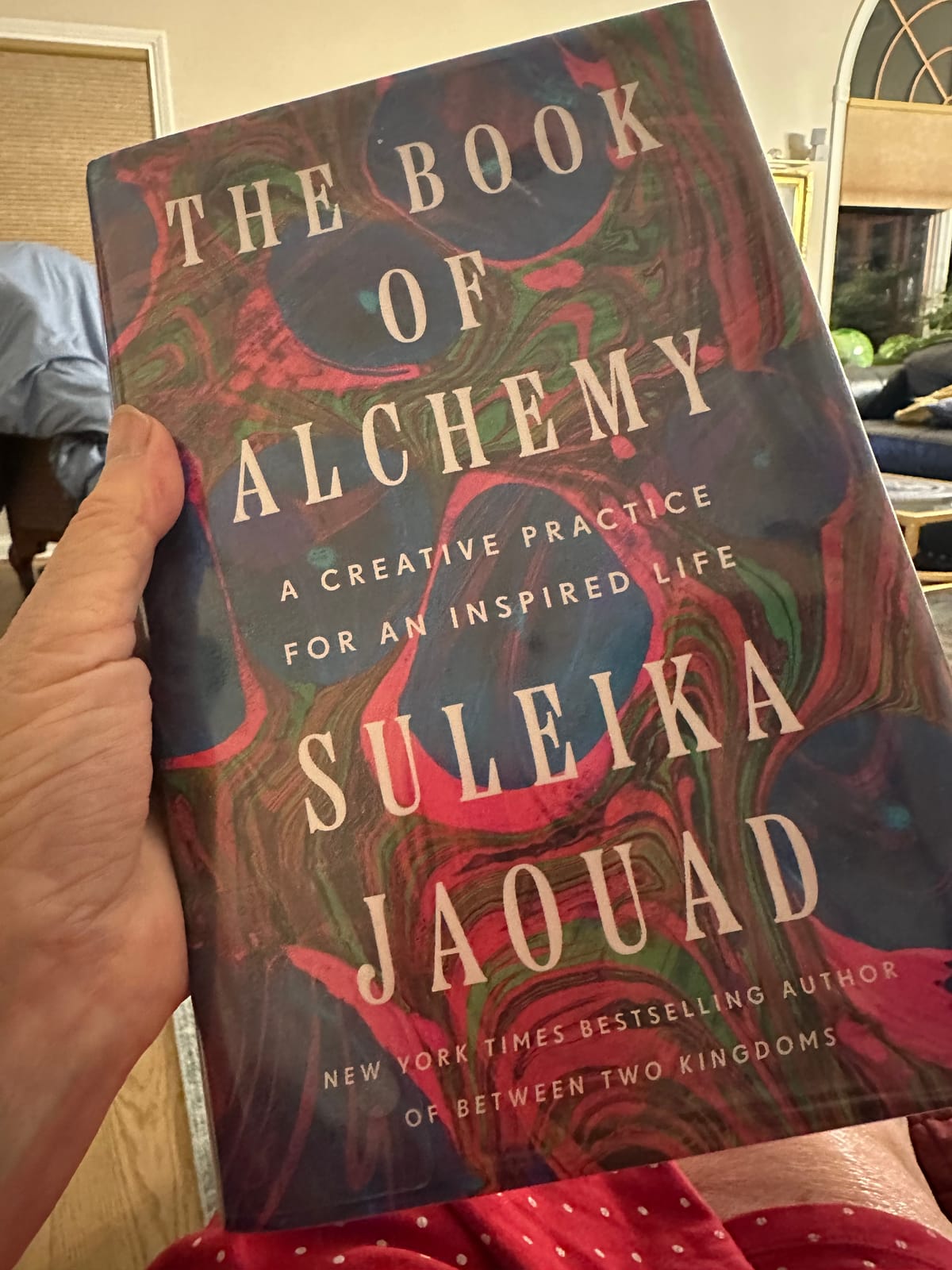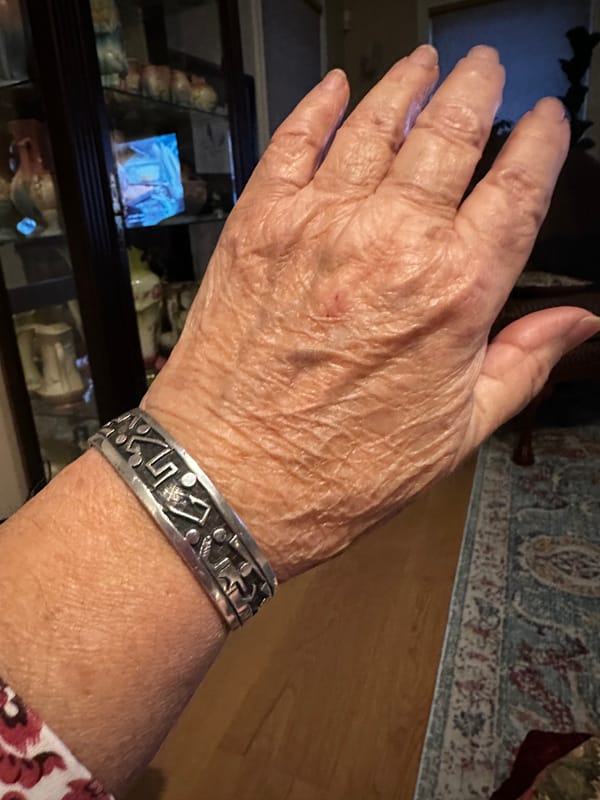The Book of Alchemy

TIME FOR ANOTHER BOOK REPORT AND RECOMMENDATION
Here’s a chapter-by-chapter summary of The Book of Alchemy: A Creative Practice for an Inspired Life by Suleika Jaouad, based on available sources. Because the book is structured as themed sections rather than conventional narrative chapters, this summary reflects the major sections and what they cover.
Overview
This book is a guided journaling companion. Jaouad draws on her own experience (notably surviving cancer and using journaling as a lifeline) and contributions from 100+ writers, artists, and thinkers to help readers use journaling as a tool for creativity, transformation, and navigating life’s uncertainties.
It’s organized around ten thematic sections (Beginning, Memory, Fear, Seeing, Love, The Body, Rebuilding, Ego, Purpose, Alchemy) rather than a linear storyline.
Each section begins with Jaouad’s reflection, followed by several short essays from contributors, then writing prompts for the reader.
Section 1: Beginning (On Beginning)
This section opens the book by exploring what it means to start something — a new phase, a new life, a new practice. Jaouad reflects on how journaling became a “book about journaling” and how beginnings can feel awkward, vulnerable, or uncertain.
Key themes: the threshold, uncertainty, taking the first step, and giving yourself permission to begin without a perfect plan.
Writing prompts invite readers to reflect on their own beginnings — what they’re starting, how they feel, and where they’d like to go.
Section 2: Memory
In this section, Jaouad and contributors invite readers to explore memory: how the past shapes us, the interplay of remembering and forgetting, and how journaling helps capture and reflect on personal history.
Key themes: writing about childhood, revisiting moments of significance, using memory as a creative source rather than a burden.
Prompts may include: revisiting a meaningful early memory, describing a moment from childhood with fresh perspective, or reflecting on how memory influences identity.
Section 3: Fear
Here the focus is on fear — embracing, acknowledging, and writing through it. Drawing from her own illness and the broader challenges of life, Jaouad discusses how fear can become a raw material for creativity when we give it voice on the page.
Key themes: vulnerability, uncertainty, the unknown, how to sit with fear rather than suppress it.
Prompts: What would you write if you weren’t afraid? What fear are you carrying? How might you converse with that fear in writing?
Section 4: Seeing
This section explores perception — how we see ourselves, others, the world — and how journaling can sharpen our attention, shift our perspective, and help us notice details we ignore.
Key themes: awareness, observation, noticing the small things, shifting vantage points.
Prompts: describe a recent scene in detail, write from the perspective of an inanimate object, note what you usually ignore.
Section 5: Love
Love is broad here: romantic, familial, self‐love, creative love. Jaouad and the contributors explore how love fuels creativity and how writing can deepen our relationship with love and with ourselves.
Key themes: invitation, connection, compassion, opening to love (and perhaps loss).
Prompts: Write a letter from Love (as a persona) to you; explore what you’d say if you weren’t afraid in love; reflect on how you show love to yourself.
Section 6: The Body
In this part, the focus shifts to embodiment — how our physical selves, our health, our sensations, our limitations, and our vulnerabilities intersect with creativity and journaling. Given Jaouad’s own medical journey, this section is especially grounded.
Key themes: physicality, illness/wellness, sensation, presence in the body, the body as site of story.
Prompts: write about your body’s sensation right now, revisit a time when your body changed or surprised you, explore gratitude for your physical self.
Section 7: Rebuilding
Here the theme is reconstruction — after loss, illness, failure, or change. The section invites reflection on how to rebuild, reclaim, re-create. Journaling is framed as a tool for doing so.
Key themes: restoration, resilience, transformation, practical creativity.
Prompts: What would rebuilding look like for you? What pieces do you keep? What do you let go? How might you design your next chapter?
Section 8: Ego
This section explores identity, self‐perception, ambition, the tensions of ego in creative work and life. Jaouad probes how the self shapes and is shaped by writing, and how journaling can be a mirror and a doorway.
Key themes: self‐awareness, ambition, humility, confrontation of the ego.
Prompts: Write as your ego; write what your ego fears; explore the difference between the self you present and the self you know.
Section 9: Purpose
Here the focus is on meaning, vocation, calling, how creativity intersects with purpose and how journaling can help you clarify or reimagine your purpose in life.
Key themes: mission, contribution, what you want to bring into the world, how creativity feeds purpose.
Prompts: What is your purpose right now? If you had no limits, what would you try? How does your creative life reflect your purpose?
Section 10: Alchemy
The final section brings together the previous nine and frames the metaphor of alchemy — transformation of base experience into gold, of hardship into insight, of raw material into creative expression. It invites readers into the ongoing practice of alchemy via journaling.
Key themes: transformation, integration, creative renewal, holding the brutal and the beautiful together.
Prompts: What needs alchemy in your life now? What raw material are you sitting on? How can you turn your experience into insight, your pain into art, your interruption into invitation?
Final Thoughts
- The book functions less as a traditional linear “what happens next” narrative and more as a workbook / reflective companion.
- If you use it fully, you’ll engage in self-reflection, creativity, and personal transformation via the prompts and essays.
- It’s ideal for readers who are comfortable with journaling or ready to start, and who are open to linking writing, life transitions, and creativity.
- According to reviewers, you don’t have to read it front‐to‐back — you can dip into any section relevant to where you are.
Julie Bolejack, MBA
juliebolejack.com
mindfulactivist.etsy.com



